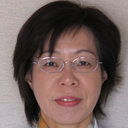Age-related increase of reactive oxygen generation in the brains of mammals and birds: is reactive oxygen a signaling molecule to determine the aging process and life span?
Ключевые слова
абстрактный
Since Harman proposed the "free-radical theory of aging", oxidative stress has been postulated to be a major causal factor of senescence. The accumulation of oxidative stress-induced oxidatively modified macromolecules, including protein, DNA and lipid, were found in tissues during the aging process; however, it is not necessarily clear which factor is more critical, an increase in endogenous reactive oxygen and/or a decrease in anti-oxidative defense, to the age-related increase in oxidative damage. To clarify the increasing production of reactive oxygen with age, we examined reactive oxygen-dependent chemiluminescent (CL) signals in ex vivo brain slices prepared from different-aged animal brains during hypoxia-reoxygenation treatment using a novel photonic imaging method. The CL signal was intensified during reoxygenation. The signals in SAMP10 (short-life strain) and SAMR1 (control) brain slices increased with aging. The slope of the increase of CL intensity with age in P10 was steeper than in R1. Age-dependent increase of CL intensity was also observed in C57BL/6 mice, Wistar rats and pigeons; however, superoxide dismutase (SOD) activity in the brain did not change with age. These results suggest that reactive oxygen production itself increased with aging. The rate of age-related increases of CL intensity was inversely related to the maximum lifespan of animals. We speculate that reactive oxygen might be a signaling molecule and its levels in tissue might determine the aging process and lifespan. Decelerating age-related increases of reactive oxygen production are expected to be a potent strategy for anti-aging interventions.


